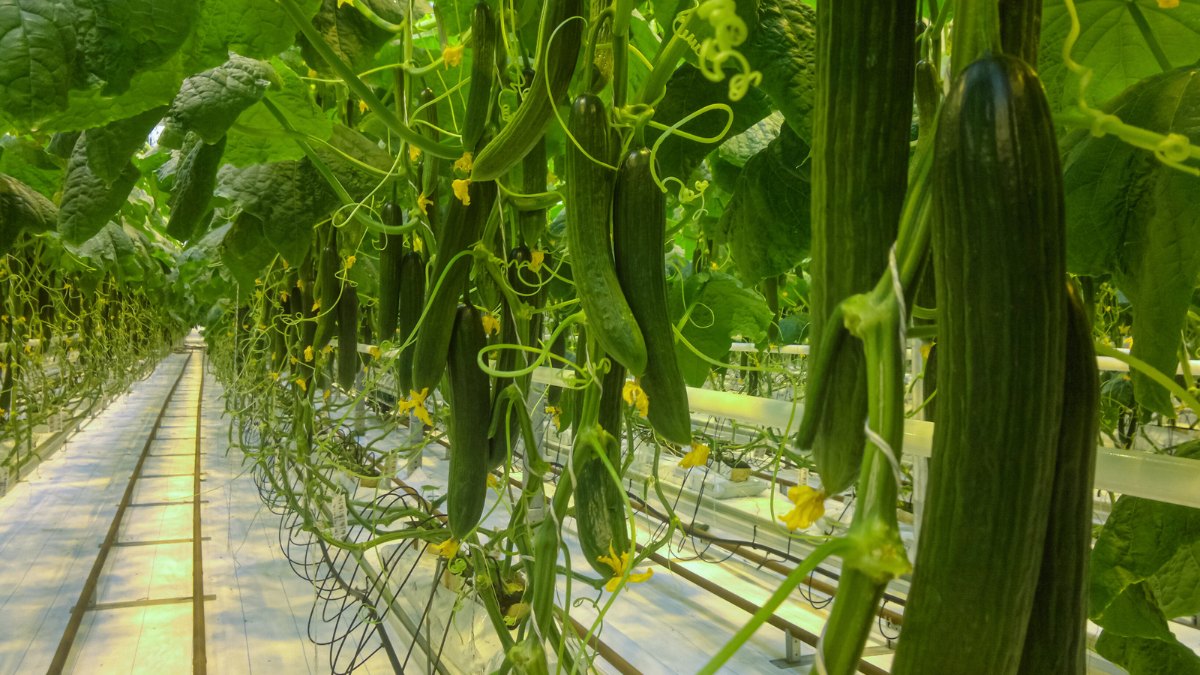You can add a burst of color to your garden with the captivating pink snapdragon flower. Renowned for its vibrant hues and unique, mouth-like blooms, the pink snapdragon plant, scientifically known as Antirrhinum majus, has long been a beloved addition to gardens worldwide.
Its versatility, easy care, and stunning appearance make it a sought-after choice for gardeners of all experience levels. Whether you’re a seasoned horticulturist or a budding green thumb, this guide will walk you through everything you need to know about cultivating these eye-catching beauties successfully. Let’s embark on this fascinating journey into the world of pink snapdragons.
Description of Pink Snapdragons
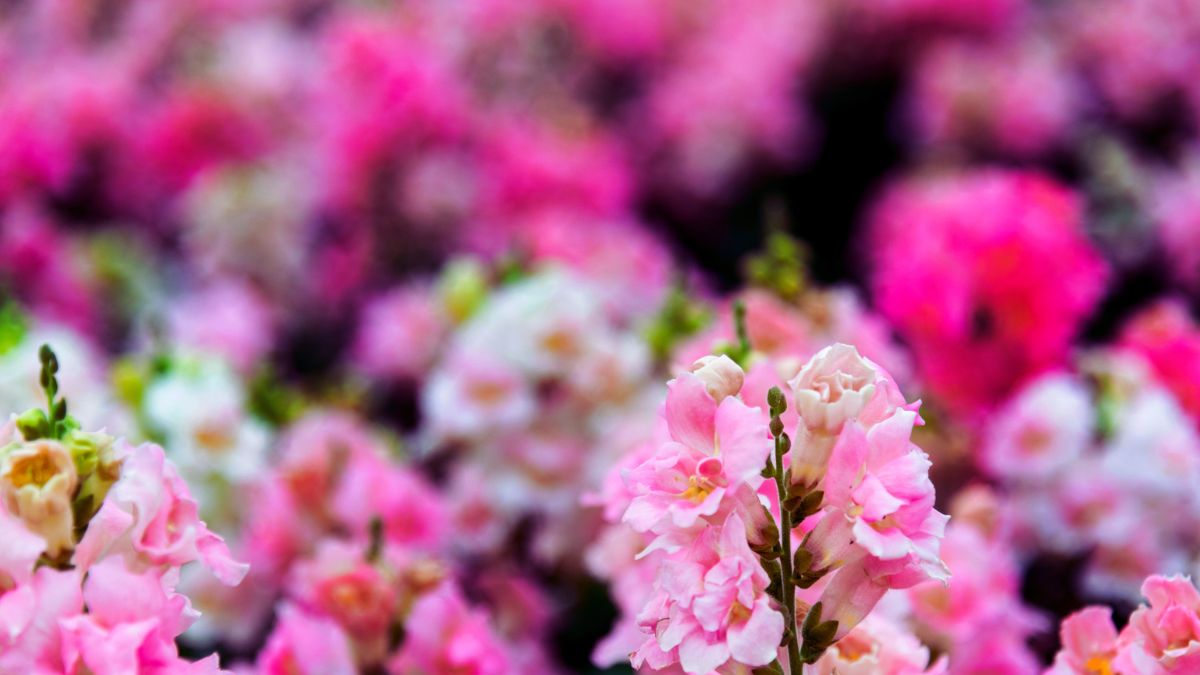
When you go into the realm of pink snapdragons, you’ll find plants that are loaded to the brim with charisma and personality. Pink snapdragons are a spectacle in the world of flowers; they are undeniably appealing and have the ability to quickly capture the attention of any observer due to the vibrant colors and distinctive shape of their petals.
Snapdragons, also known as Antirrhinum majus, have a tall, upright growth habit. They stand proudly amongst other plants, reaching a height of 30-36 inches and a width of 16-18 inches. Despite their lofty stature, they maintain a graceful posture, making them a striking element in any garden setting.
The appeal of the snapdragon extends beyond its impressive height. Each stalk of the plant features a plethora of delicate blooms layered in a systematic fashion. Beginning at the base of the stalk, the flowers bloom successively upwards, presenting a continuous display of vibrant pink color throughout the blooming seasons of early spring, spring, and autumn.
The individual flowers, the plant’s namesake, are truly a wonder to behold. They boast a distinctive morphology that sets them apart from many other blossoms. Each bloom resembles a dragon’s mouth, hence the name “snapdragon”. The petals, soft and delicate, form an enclosure that, when gently squeezed, appears to open and close just like a mouth. This playful characteristic endears the pink snapdragon to children and adults alike, adding a touch of whimsy to your garden.
However, the allure of the pink snapdragon doesn’t stop at its unique blossoms. The foliage that accompanies the stalks of these flowers is equally noteworthy. The leaves are lanceolate in shape, and their deep green hue provides a striking contrast to the vibrant pink blooms. The foliage not only enhances the plant’s overall aesthetic appeal but also contributes a lovely, grape-like scent, further elevating the sensory experience of the pink snapdragon.
The versatility of the snapdragon’s growth habit enhances its charm even further. While the traditional snapdragon displays a tall, bushy demeanor, more recent varieties show a tendency towards a trailing or creeping growth habit. This makes them a perfect choice for containers, hanging baskets, and window boxes, where they can cascade over the edges and create a lush, floral waterfall.
The pink snapdragon flower, with its vibrant color, unique blossoms, and versatile growth habit, offers more than just a pretty face. It brings life, color, and a touch of playful whimsy to any garden. Whether standing tall among other blooms or cascading from a hanging basket, it never fails to leave a lasting impression.
Growing Conditions for Pink Snapdragon Flowers
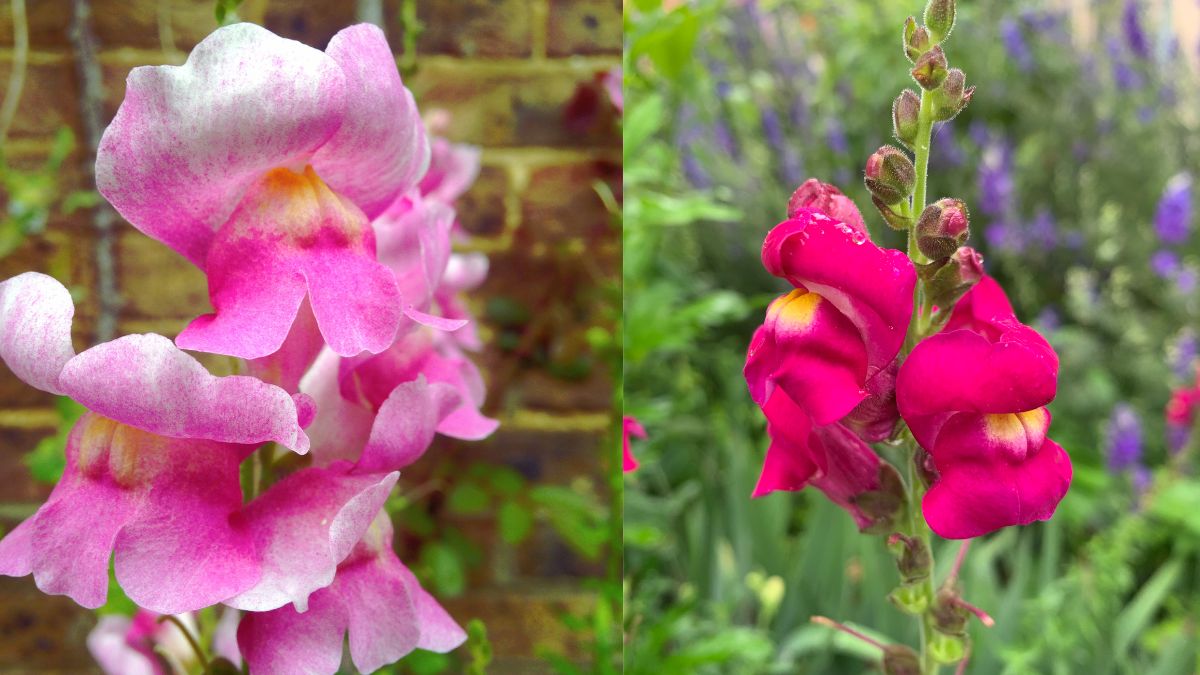
Understanding the ideal growing conditions for pink snapdragons is pivotal in ensuring their thriving growth. As resilient as these plants are, they do require specific conditions to grow and bloom optimally.
Hardiness
Firstly, let’s look at the climate suitable for these bright-hued beauties. Pink snapdragons thrive in Growing Zones 7 to 10. These zones offer the moderate conditions that these plants relish. Notably, pink snapdragons can tolerate cooler conditions and are robust enough to withstand light frost, making them a good choice for early spring and late autumn planting.
Light
While they are adaptable to various weather conditions, they do have a preference for full sun exposure. The radiant warmth and light of the sun are essential in promoting healthy growth and vibrant blooms in pink snapdragons. This isn’t to say they won’t grow in partial shade, but you’ll notice that those planted in sunny locations tend to be more floriferous and robust.
Soil
In terms of soil, pink snapdragons prefer well-drained, compost-amended soil. The soil should be rich in organic matter, providing all the essential nutrients the plant needs to grow. This preference for well-drained soil means they don’t take kindly to waterlogging, which can lead to root rot and other fungal diseases.
Watering
Watering needs for pink snapdragons are average, which means regular watering is necessary, especially during dry spells. But remember, while snapdragons appreciate moisture, overwatering can cause as many problems as underwatering. Aim to keep the soil consistently moist but not soaking.
Fertilization
When it comes to feeding these plants, they are not heavy feeders, but an occasional treat of fertilizer can help boost their growth. Using a balanced, slow-release fertilizer during the growing season can ensure that they receive a steady supply of nutrients, which will help produce an abundance of lush, vibrant blooms.
While the pink snapdragon is a sturdy plant, providing these ideal growing conditions will help ensure that your snapdragons are not only surviving but thriving in your garden, providing a spectacular display of pink blooms throughout their blooming seasons.
Planting and Caring for Pink Snapdragons
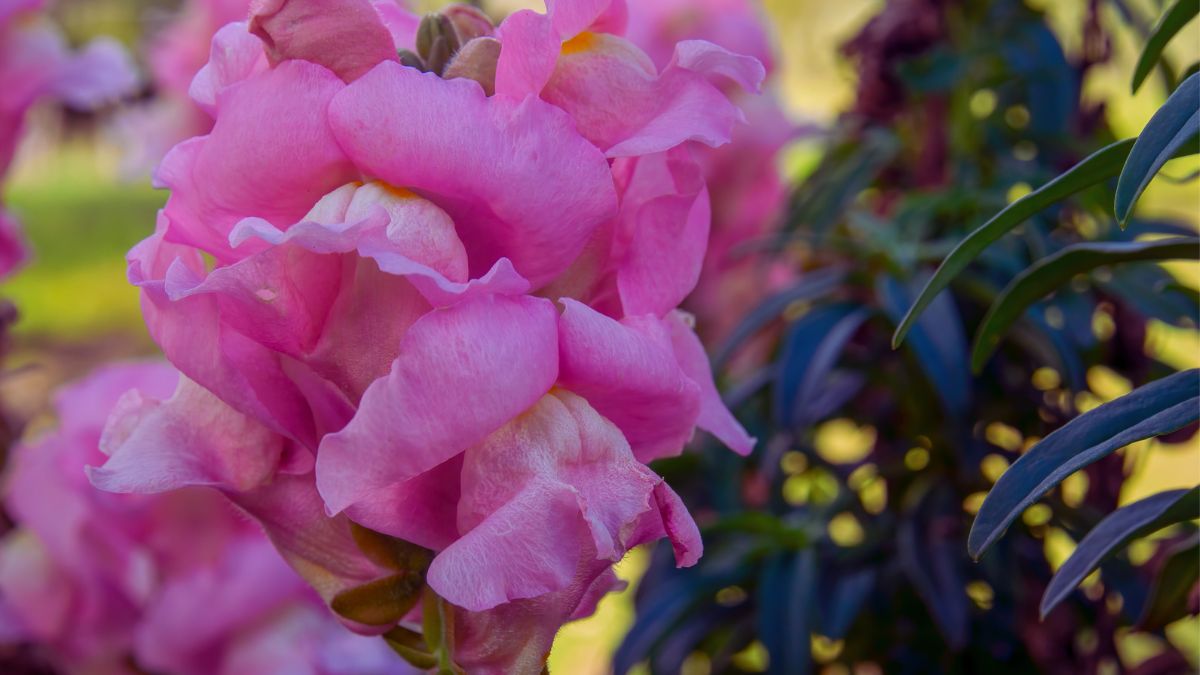
Planting pink snapdragons is a rewarding process that brings lush, colorful blooms to your garden. While they are not particularly demanding, understanding the nuances of their planting and ongoing care will ensure a successful growth cycle.
Planting time
When to plant is largely dependent on your local climate, but generally, early spring or autumn are preferred. If you’re sowing seeds directly, bear in mind they require light to germinate, so press them gently into the soil surface but do not cover them.
Spacing
In terms of spacing, give your snapdragons some room to grow. Plant them 14 – 18 inches apart to allow for good airflow and prevent crowding. Crowded plants can lead to an increase in diseases and pests, so adequate spacing is essential.
Once your snapdragons are in the ground, regular care and maintenance will help them flourish. Start with pinching the tips of the plants after transplanting. This encourages a bushier plant and promotes the growth of more flower spikes, leading to a more abundant bloom.
Snapdragons can grow quite tall, and taller varieties might need staking to keep the flower stalks upright and prevent them from curving. This is particularly important if you’re planning on using them as cut flowers.
Even with the best care, snapdragons may attract some pests, like aphids or rust fungus, which I mention in more detail below. Keeping an eye out for any signs of disease or infestation will allow you to tackle any issues early and keep your plants healthy.
Lastly, while snapdragons don’t require deadheading to continue blooming, removing spent flowers can keep the plant looking neat and tidy. This can also help focus the plant’s energy on producing new blooms rather than setting seeds.
With the right planting techniques and ongoing care, your pink snapdragons can thrive, providing a stunning display of color and charm in your garden for seasons to come.
Using Pink Snapdragons in Landscape Design
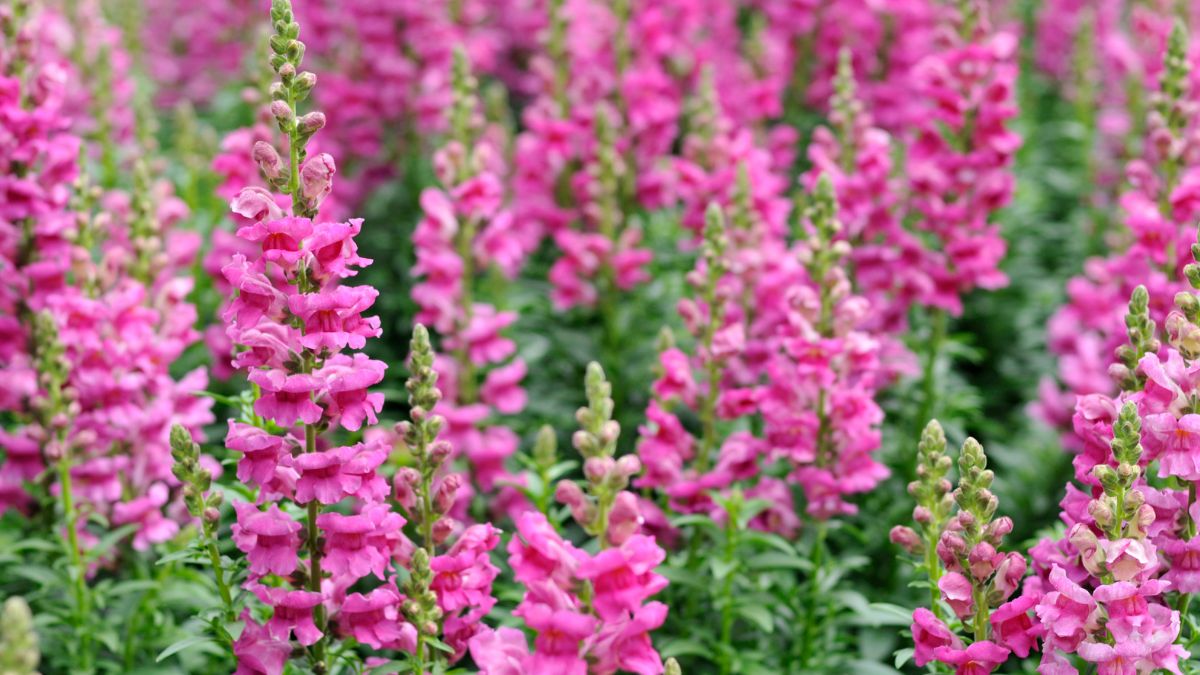
When it comes to landscape design, pink snapdragons are incredibly versatile. Their eye-catching appearance and variety of growth habits allow them to play different roles in the garden, creating stunning visual effects.
One popular way to use pink snapdragons is in mass plantings. Imagine a sea of vibrant pink flowers, their stalks standing tall and proud against the garden backdrop. Not only is this visually appealing, but the collective fragrance of these plants can also enhance the sensory experience of your garden.
But don’t think of them as only suitable for large-scale plantings. Their upright growth habit also makes pink snapdragons excellent border plants. They can add height and structure to flower beds and provide a vibrant contrast to low-growing plants. Additionally, they can serve as a backdrop for smaller plants, allowing those diminutive blossoms to shine.
Companion plants
Pink snapdragons also make excellent companions to other cool-season plants. Pair them with bleeding hearts or pansies for a harmonious display of early spring color. Their bright hues can liven up the softer tones of these companion plants, creating a balanced and appealing aesthetic.
Moreover, these plants are not just confined to the ground. The trailing or creeping varieties of snapdragons are perfect for container gardening. You can place them in pots, hanging baskets, or window boxes where their cascading blooms can truly be appreciated. They make excellent spillers in the “thriller, filler, spiller” container planting design, draping over the edges with their vibrant pink blossoms.
Another aspect to consider is their use in cut flower gardens. Due to their long, sturdy stems and lasting blooms, pink snapdragons make fantastic cut flowers. Grow a patch in your garden to provide a steady supply of fresh, beautiful flowers for your home.
In shaded areas of the garden, pink snapdragons can brighten up the space and compliment foliage perennials like brunnera and hosta. Their vibrant colors can bring a dash of cheerfulness to areas that don’t receive much sunlight.
Using pink snapdragons in landscape design is only limited by your creativity. Their beauty, versatility, and easy-care nature make them a standout addition to any garden, whether in the ground or in containers.
Pink Snapdragon Problems, Pests, and Diseases
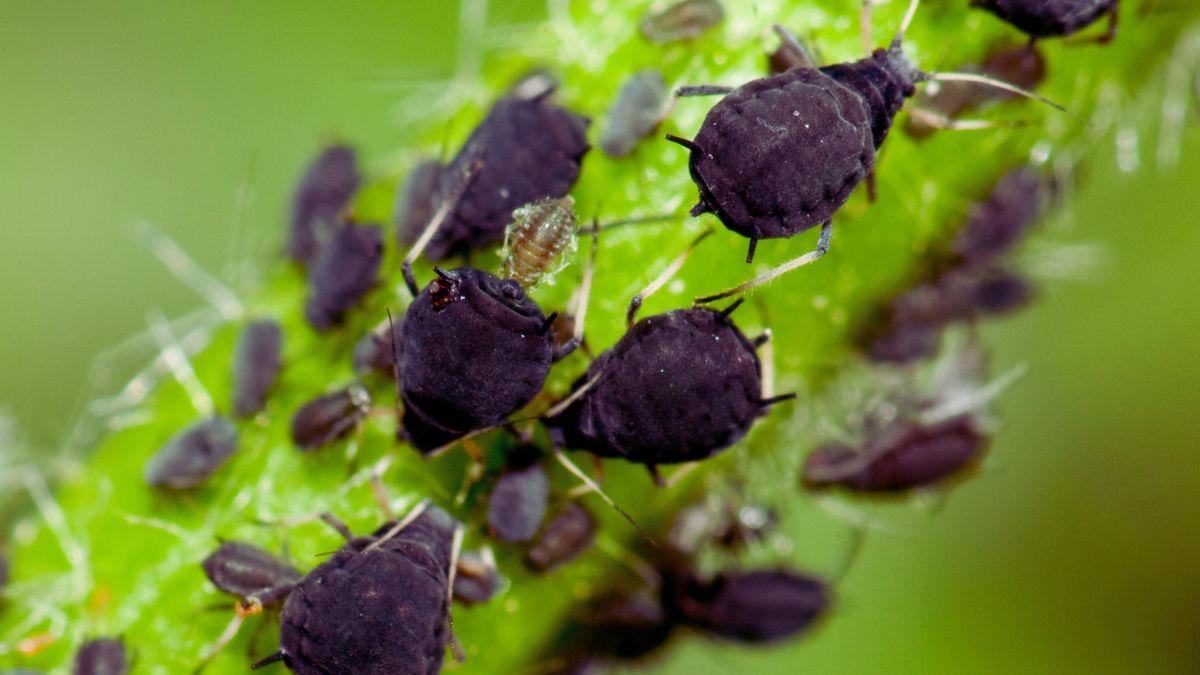
While pink snapdragons are generally easy to grow, like all plants, they can be affected by certain pests and diseases. Early identification and action are crucial to manage these issues effectively and keep your plants healthy and vibrant.
One of the most common pests that can plague pink snapdragons is aphids. These small, sap-sucking insects can weaken the plant over time and spread diseases. They are typically found on the underside of leaves or around new growth. A strong jet of water can dislodge light infestations, while more serious invasions may require the use of insecticidal soap or other organic pest control measures.
Rust fungus is another common issue that can affect snapdragons. This disease causes orange-brown pustules on the leaves’ underside, and if left unchecked, it can cause significant damage to the plant. It often occurs in wet, humid conditions or when plants are watered overhead. The best prevention is to water at the base of the plant and to ensure good air circulation. Infected plants should be removed to prevent the fungus from spreading.
Other potential issues include root rot, which can occur when snapdragons are overwatered or planted in poorly drained soil, and powdery mildew, a fungal disease that can affect the leaves and stems, particularly in crowded, humid conditions.
Planting disease-resistant varieties, ensuring good air circulation, and practicing crop rotation can help keep these problems at bay. Also, keeping the garden clean and removing any fallen, diseased leaves can prevent pests and diseases from spreading.
It’s also worth noting that snapdragons can occasionally suffer from nutritional deficiencies. Pale leaves may suggest a lack of nitrogen, while yellow or curled leaves can indicate a potassium deficiency. These issues can usually be resolved with a balanced, slow-release fertilizer.
Despite these potential problems, don’t let the fear of pests and diseases deter you from growing these beautiful plants. With a little bit of care and attention, pink snapdragons can remain a healthy and vibrant part of your garden.
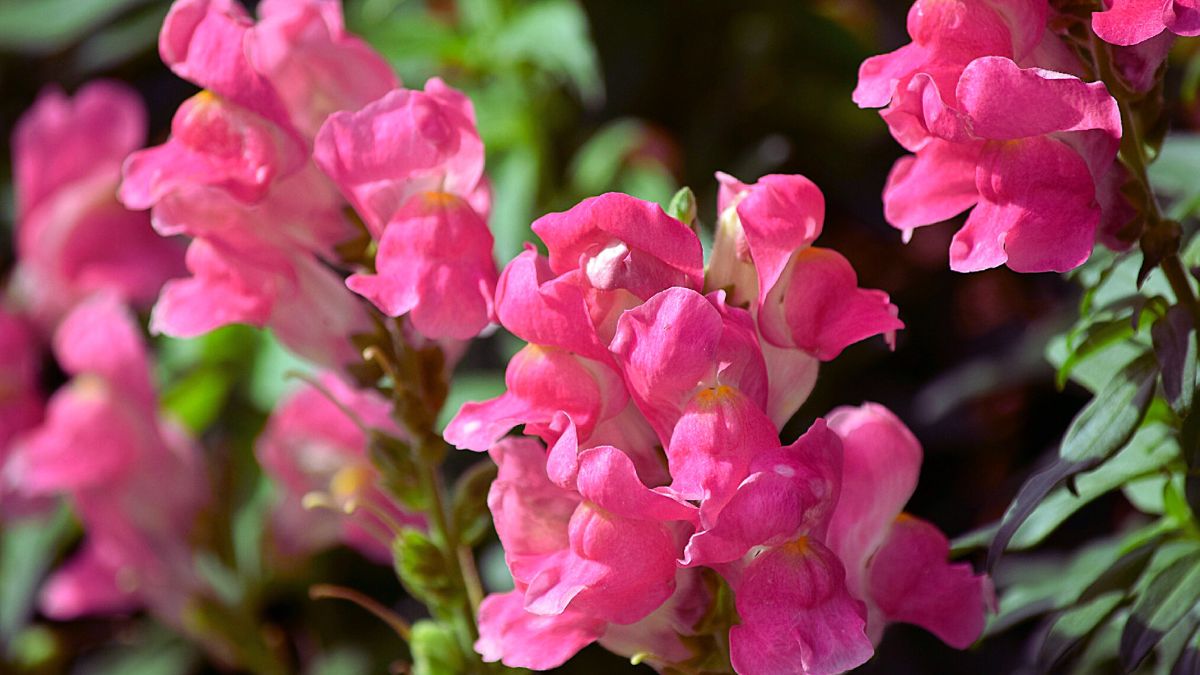
Conclusion
In the world of ornamental horticulture, the pink snapdragon stands tall and vibrant, a testament to nature’s palette and a spectacle of seasonal color. With its playful charm and vivid hues, it brings joy and vibrancy to any garden.
From understanding the pink snapdragon’s growth habits and ideal conditions to appreciating its role in landscape design, we have delved into various aspects that make this plant a treasured addition to any garden. Growing these enchanting flowers can be a deeply rewarding experience, as they not only enhance the beauty of your surroundings but also offer an engaging journey in the realm of gardening.
Despite potential problems such as pests and diseases, armed with the right knowledge and gardening practices, you can effectively navigate these challenges. Remember, the success of gardening often lies in observation, patience, and continual learning.
Whether you’re a seasoned gardener or a novice exploring the verdant world of flora, growing pink snapdragons can provide an enriching and enjoyable experience. Their vivid display of pink and their endearing forms create a spectacle of beauty, adding a touch of magic to your garden.
In the end, the pink snapdragon is more than just a flower. It’s a testament to the enchanting diversity of nature, a vibrant symbol of resilience, and a source of continual joy and discovery in the garden.
Can I grow pink snapdragons from seeds?
Absolutely! Growing pink snapdragons from seeds is a viable and rewarding method. You can sow the seeds directly into your garden soil. Remember, these seeds need light to germinate, so don’t bury them; just press them gently into the soil. Depending on your local climate, early spring or autumn are the best times to plant your snapdragon seeds.
How often should I water my pink snapdragons?
Pink snapdragons prefer consistent soil moisture. It’s important not to let the soil dry out completely, but equally crucial not to overwater as this can lead to root rot. During hot weather, you might need to water more frequently as the soil can dry out faster. Always check the top inch of the soil before watering; if it’s dry, it’s time to water.
My pink snapdragons have yellow leaves. What could be the issue?
Yellow leaves can be a sign of several issues. Overwatering or poor drainage can lead to root rot, which in turn can cause yellowing leaves. A nutrient deficiency, particularly in nitrogen or potassium, can also result in yellow or pale leaves. If you suspect a nutrient deficiency, applying a balanced, slow-release fertilizer can help address the issue. Always ensure your snapdragons are planted in well-drained soil, and monitor your watering routine to avoid overwatering.
